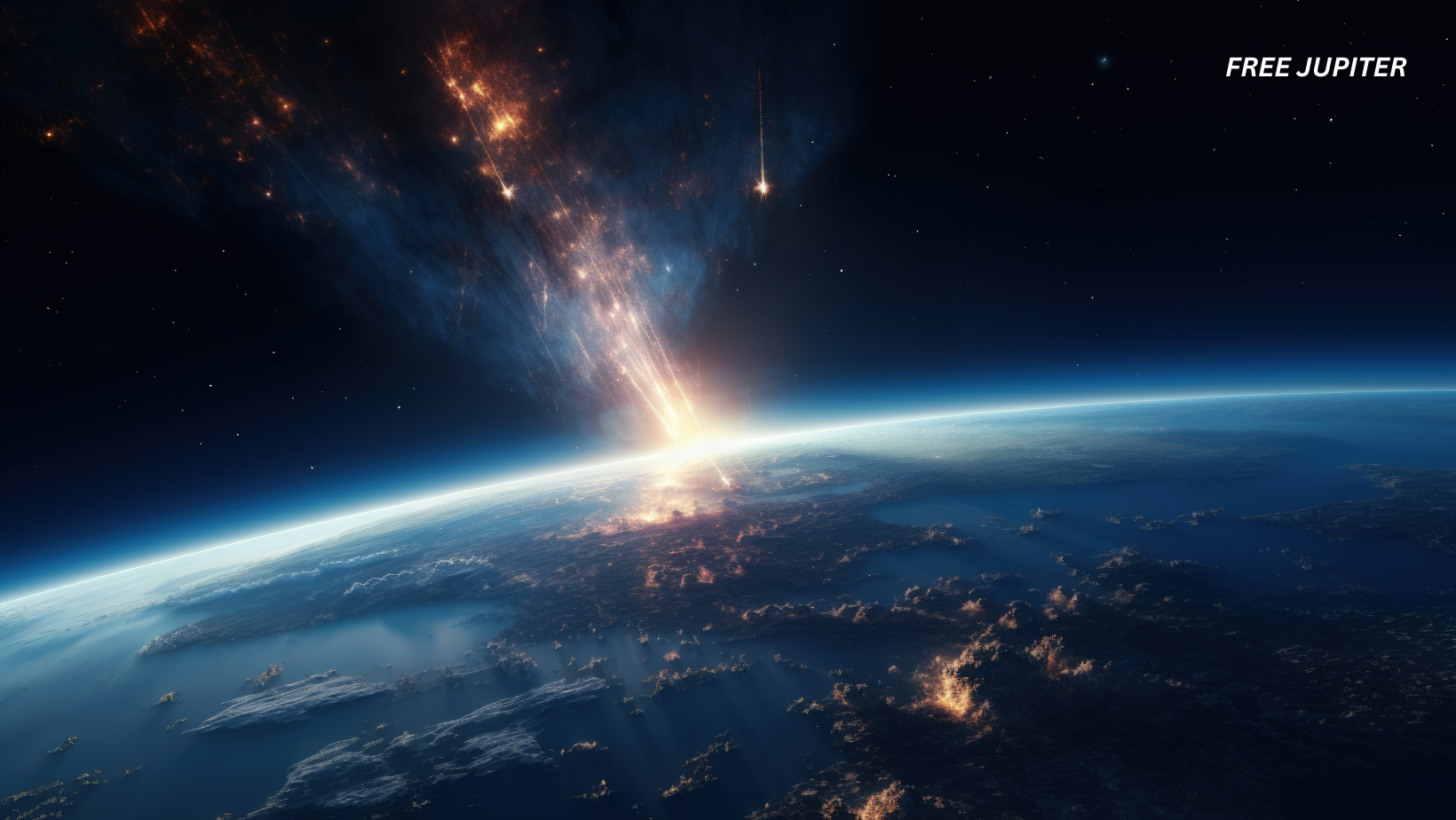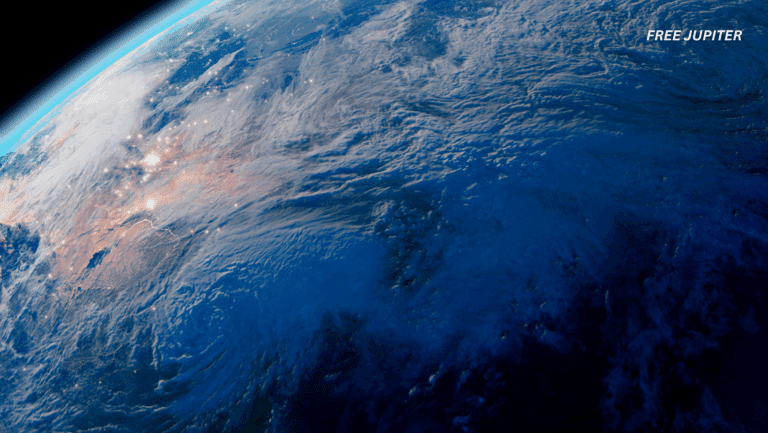Friendly Note: FreeJupiter.com shares general info for curious minds 🌟 Please fact-check all claims—and always check health matters with a professional 💙
Imagine Earth is slowly warming up after a long Ice Age. Plants are growing again, animals are thriving, and early human civilizations are beginning to take root. Then, out of nowhere, the climate slams into reverse and temperatures drop drastically. Glaciers start creeping back in. Ecosystems shudder. It’s like Mother Nature suddenly hit the pause button on global spring.
This real-life cold snap, known as the Younger Dryas, happened around 12,800 years ago, and scientists have been trying to figure out what caused it ever since. One particularly bold theory? A massive comet exploded in Earth’s atmosphere, raining down cosmic debris and triggering a dramatic planetary cooling. And now, thanks to new discoveries at the bottom of the ocean, that wild idea is looking a little less wild.
❄️ What Is the Younger Dryas, and Why Was It So Strange?
The Younger Dryas wasn’t just a chilly moment in Earth’s history—it was a full-on climate whiplash. After the last Ice Age, Earth was slowly warming up, glaciers were retreating, and life was adapting to the change. Then, seemingly without warning, the planet plunged back into near-glacial conditions.
This cold period lasted for over a thousand years, and its sudden arrival has baffled researchers for decades. Traditional explanations pointed to shifts in ocean currents or the melting of massive ice sheets disrupting global weather systems. But none of those ideas fully explain just how abrupt—and widespread—the temperature drop was.
This is where the impact hypothesis comes in: what if something big (and from outer space) had a hand in flipping Earth’s climate switch?
☄️ The Comet Theory: Outlandish or On Target?
One particularly intriguing theory suggests that a comet—or fragments of one—entered Earth’s atmosphere and exploded before hitting the surface. This kind of airburst event would have released massive amounts of energy, heating the atmosphere and throwing up dust, soot, and tiny particles that could block sunlight. That sudden darkening of the skies might’ve triggered a sharp, planet-wide temperature drop.
But there’s been a catch: no impact crater has ever been found. If a comet or meteor hit the Earth that hard, shouldn’t it have left a gaping hole?
Well, not necessarily.
Instead of slamming into the ground like a cosmic cannonball, the comet may have exploded mid-air, kind of like the Tunguska event in Siberia in 1908. In that case, the explosion flattened thousands of square kilometers of forest—without leaving behind a crater. Scientists think a similar event might have occurred during the Younger Dryas—on a much larger and more catastrophic scale.
🌊 Searching the Seafloor for Clues
Enter geoscientist Christopher Moore from the University of South Carolina. He and his team decided to look for evidence not on land, but beneath the ocean, where sediments have quietly collected over millennia, layer by layer, like pages in a history book.
They focused on Baffin Bay, an icy stretch of ocean tucked between Canada and Greenland. This area was ideal for their search because it’s relatively untouched by human activity and contains highly laminated (or neatly layered) seafloor sediment—perfect for pinpointing events in Earth’s past.
To investigate, they extracted sediment cores—long cylinders of mud and minerals collected vertically from the ocean floor. These cores act like natural time machines, capturing material that settled over thousands of years. The team then used radiocarbon dating to determine the age of each layer and zeroed in on those from around the time the Younger Dryas began.
🔬 The Smoking Gun? Tiny Alien-Like Dust Grains
Once the appropriate layers were isolated, the team got to work with a cutting-edge tool called single-particle inductively coupled plasma time-of-flight mass spectrometry—which, in simpler terms, lets them look at tiny particles one at a time and analyze their chemical makeup.
What they found was fascinating:
- Microspherules (tiny round particles) that were rich in iron and silica.
- Metallic grains with high nickel and low oxygen—a chemical signature that doesn’t match common Earth materials but does resemble what you’d expect from a comet or meteor.
- Meltglass, a type of glass formed only under extreme heat—far hotter than anything Earth’s normal geology produces.
- Surprising spikes in rare elements like platinum and iridium, which are often found in space rocks but are extremely rare in Earth’s crust.
These findings suggest something intense happened around that time—something hot, explosive, and likely extraterrestrial in origin.
Moore and his team believe these traces are consistent with a high-altitude comet airburst. The intense heat would’ve vaporized parts of the comet and parts of Earth’s surface, mixing them into glassy particles and scattering them across the planet.
🌍 Not Just One Spot—A Global Pattern Emerges
Even more compelling? These same markers—microspherules, meltglass, and rare elements—have been found at dozens of other locations around the world, including:
- North and South America
- Europe
- The Middle East
- And even parts of the Southern Hemisphere
This kind of global distribution suggests the event wasn’t local or isolated. It may have been a worldwide catastrophe, possibly involving multiple airbursts or a fragmented comet breaking apart across the atmosphere. Think of it like a cosmic shotgun blast rather than a single bullet.
And if that kind of widespread impact really occurred, it makes sense that the climate—and life on Earth—would have felt the aftershocks.
👣 What About Humans?
At the time of the Younger Dryas, early human civilizations were just beginning to take root. Some researchers have even speculated that this sudden return to cold conditions may have had major impacts on human development, forcing early societies to adapt quickly—or even causing certain cultures to collapse.
In North America, for example, some archaeologists have linked the timing of the Younger Dryas to the sudden decline of the Clovis culture, known for its distinctive spear points and widespread presence. Could a cosmic explosion have wiped out food sources, reshaped landscapes, and driven ancient peoples into survival mode? It’s a controversial idea, but it’s gaining traction.
🧭 So… What Happens Next?
This isn’t the end of the story. Moore and his team are now planning to expand their search to other parts of the ocean. They’ll be analyzing sediment cores from different regions to see if the same types of comet-related particles show up elsewhere.
If these clues appear in multiple oceans, it could be the final piece of evidence scientists need to confirm that a cosmic event truly rocked the Earth during the Younger Dryas.
That kind of confirmation would not only rewrite part of climate history—it could reshape how we understand the fragility of our planet, and just how much influence space can have on life down here.
Read more: Scientists Discover Massive Underground Reservoir Holding 3x More Water Than All Our Oceans Combined
📘 Final Thoughts: Dust, Ice, and a Space Mystery
For now, we’re still piecing together the puzzle. The idea of a comet exploding in Earth’s atmosphere and altering the planet’s climate for over a thousand years might sound like science fiction—but the science is starting to point in that direction.
And who knew that the key to unraveling such an epic story could be found in a few grains of dust buried deep beneath the ocean floor?
So the next time you look up at a shooting star or read about comets whizzing by in the sky, just remember: sometimes, the cosmos leaves clues—not in the sky, but in the mud, quietly whispering secrets from long ago.










